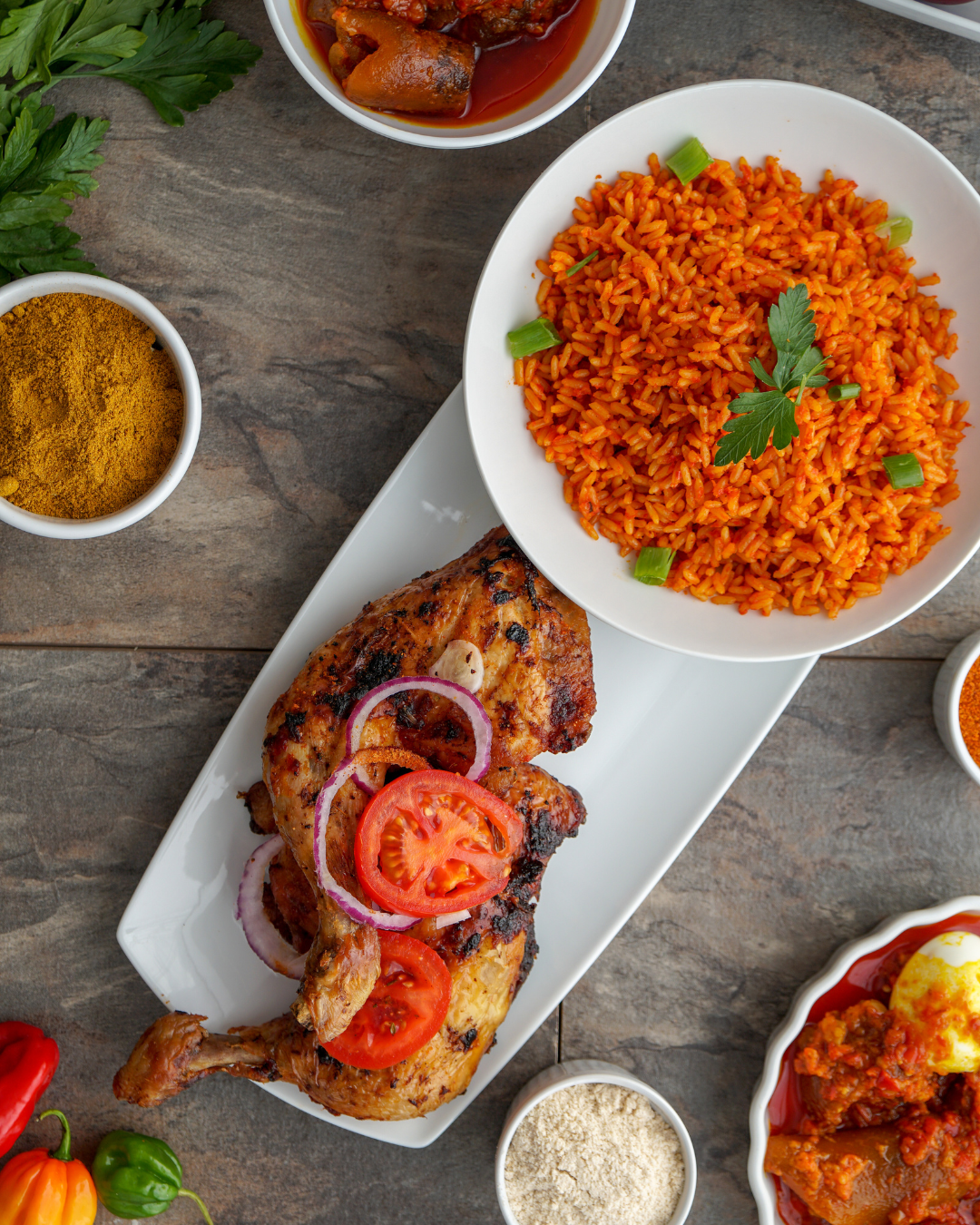 |
Nigerian cuisine is a colorful tapestry of flavors and traditions, and at the heart of it all lies a dish that holds a special place in the hearts of Nigerians: Jollof rice. This tantalizing one-pot dish is more than just food; it's a symbol of unity, celebration, and the rich cultural heritage of Nigeria. In this blog post, we'll delve into the world of Jollof rice and its profound significance in Nigerian culture.
A Culinary Tradition Steeped in History
Jollof rice has a long and storied history in West Africa, and it's a dish that has been enjoyed for generations. While its exact origin is a subject of debate, many Nigerians proudly claim it as their own. It is believed that the dish's name, "Jollof," may have derived from the Wolof people of Senegal, but its preparation and flavors have evolved distinctively in Nigeria.
Ingredients that Tell a Story
At its core, Jollof rice consists of three main components: rice, tomatoes, and a blend of spices. However, the magic of Jollof rice lies in the diversity of ingredients and regional variations that Nigerians bring to the table. Some essential ingredients include long-grain parboiled rice, ripe tomatoes, onions, bell peppers, scotch bonnet peppers, garlic, ginger, thyme, bay leaves, and a mix of spices like curry powder and paprika. Protein options like chicken, beef, or fish are often added, making the dish a hearty and complete meal.
The Preparation Process
Preparing Jollof rice is an art form that requires skill, patience, and love. The rice is typically parboiled to ensure it absorbs the flavors of the sauce without becoming mushy. The tomato-based sauce is prepared separately, using a blend of fresh tomatoes, peppers, and spices. This sauce is then simmered until it reaches a rich, thick consistency. The parboiled rice is added to the sauce, and the two are cooked together until the rice is perfectly tender and infused with the vibrant flavors of the sauce.
Regional Flair
Nigeria's diversity is reflected not only in its people but also in its cuisine. Each region of Nigeria puts its unique twist on Jollof rice. In the south, you might find seafood Jollof with prawns and crayfish, while in the north, a spicier, more aromatic version is preferred. The Yoruba people are known for their smoky party Jollof, cooked over an open flame, while the Igbo people may add a touch of groundnut (peanut) sauce for a nutty flavor.
Jollof Rice and Celebrations
Jollof rice is more than just a daily meal in Nigeria; it's a symbol of celebration and togetherness. It's the dish of choice for weddings, birthdays, and other festive occasions. No Nigerian party is complete without a generous serving of Jollof rice on the menu. It brings people together, transcending ethnic, cultural, and social boundaries. Sharing a plate of Jollof rice is a way for Nigerians to celebrate their shared love for good food and good company.
Jollof rice is more than just a dish; it's a cultural icon that embodies the spirit of Nigeria. With its rich history, diverse flavors, and role in celebrations, it has become a unifying force in a country known for its diversity. So, the next time you savor a plate of Jollof rice, remember that you're not just enjoying a meal; you're tasting a piece of Nigeria's vibrant culture and heritage.































































I tried this recipe last week and absolutely loved it
ReplyDelete